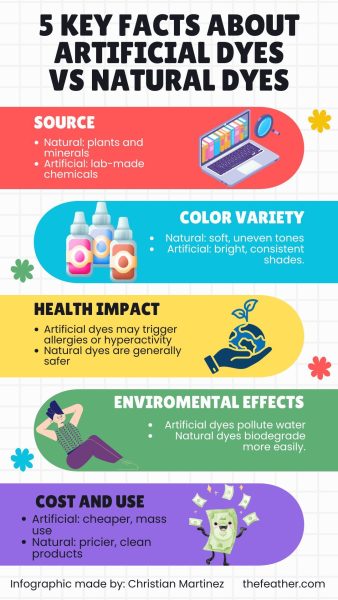The country’s largest multinational retail corporation, Walmart, made a bold move on October 1 to reformulate ingredients in the American food supply. Some favorites, like Takis, Doritos, and certain sports drinks, will have to be removed or modified to stay on Walmart’s shelves.
Walmart announced a plan to remove synthetic food dyes from its shelves. The motivation is to encourage manufacturers to substitute synthetic ingredients in their foods for natural food dyes. As a result, more than 1,000 products will be affected by the new mandates. If manufacturers and food suppliers do not comply with Walmart’s latest stance, the products will be promptly removed from shelves by the January 2027 deadline.
Artificial dyes are not the only target of this new mandate; Walmart is also eliminating thirty ingredients. Those different ingredients include preservatives, such as potassium nitrate.

Commenting on this topic, Kevin Martinez, MD, brings more than eighteen years of medical experience. As a board-certified internal medicine doctor, he is keen on any topic related to the health of the general public.
“Although large studies (e.g., McCann et al., Lancet 2007) found a slight but measurable increase in hyperactive-type behavior in some children after consuming artificial dyes, current studies show no convincing evidence of cancer from current approved dyes,” Martinez said. “However, the number of studies to date is limited. Therefore, we must be cautious when consuming foods containing these dyes, since we still do not know the long-term effects they may have on our normal physiology.”
As a result, many see the removal of artificial food dyes as a move in the right direction. Although the impact of synthetic dyes remains controversial, the Food and Drug Administration has already revoked certification for a few dyes, such as Red No. 3.
On a similar note, a common trend has followed teenagers as they grow up: what they put into their bodies becomes a greater concern. Students should be interested in creating a fruitful community; if synthetic dyes are harming children, it should be a top priority to switch to more nutritious alternatives.
Removal of Artificial Dyes
On April 22, the FDA announced plans to remove artificial food dyes from American consumers’ shelves. The FDA is actively working with major food manufacturers to purge six synthetic dyes, including FD&C Green No. 3, FD&C Red No. 40, FD&C Yellow No. 5, FD&C Yellow No. 6, FD&C Blue No. 1, and FD&C Blue No. 2.
Natural dyes vs Artificial dyes

Different food dyes are categorized into two groups: natural and artificial.
Natural food dyes are often derived from plants, minerals, or animals. Some common downsides of these dyes include the price compared to their artificial counterparts. Also, natural dyes are less vibrant and tend to fade quickly, potentially limiting their shelf life in the consumer’s eyes.
The components of artificial dyes are human-made or synthetic. In past years, food producers preferred these dyes for the vivid colors they produced.
Affects on Fresno Christian
On campus, students frequently buy snacks at MartStuff, right next to Room 601. The menu consists predominantly of simple snacks that can serve as a light breakfast. But several snacks would not be categorized as healthy, such as Takis.
However, Takis are the favorites of many students because of their unique and tasty qualities. But unbeknownst to some, ingredients listed include Red 40, Yellow 6, and Blue 1. Students often question the link between these ingredients and their removal from major retailers.
Senior Cole Fluharty prides himself on a balanced diet and fitness regimen, but often has to check himself amid the temptations MartStuff promotes.
“It’s tough when snacks like Takis are everywhere on campus,” Fluharty said. “They taste great, but when you start hearing about the ingredients like Red 40 being phased out, it makes you think twice about what you are putting in your body.
The current school of thought among many people is that if it hasn’t been shown to cause harm, then why should these artificial dyes be removed from processed foods? Instead, we should recognize the negative impact processed foods have on the human body. Also, we should not be willing to consume dyes until they have been shown not to cause harm to the human body.
If you have an opinion about this topic, leave a comment below.
To read another health-focused column from The Feather, visit Food for Thought: The hidden cost of convenience
To read more from The Feather, visit Student althlete’s face the race to be recruited and Fall sports heat up as playoffs near






